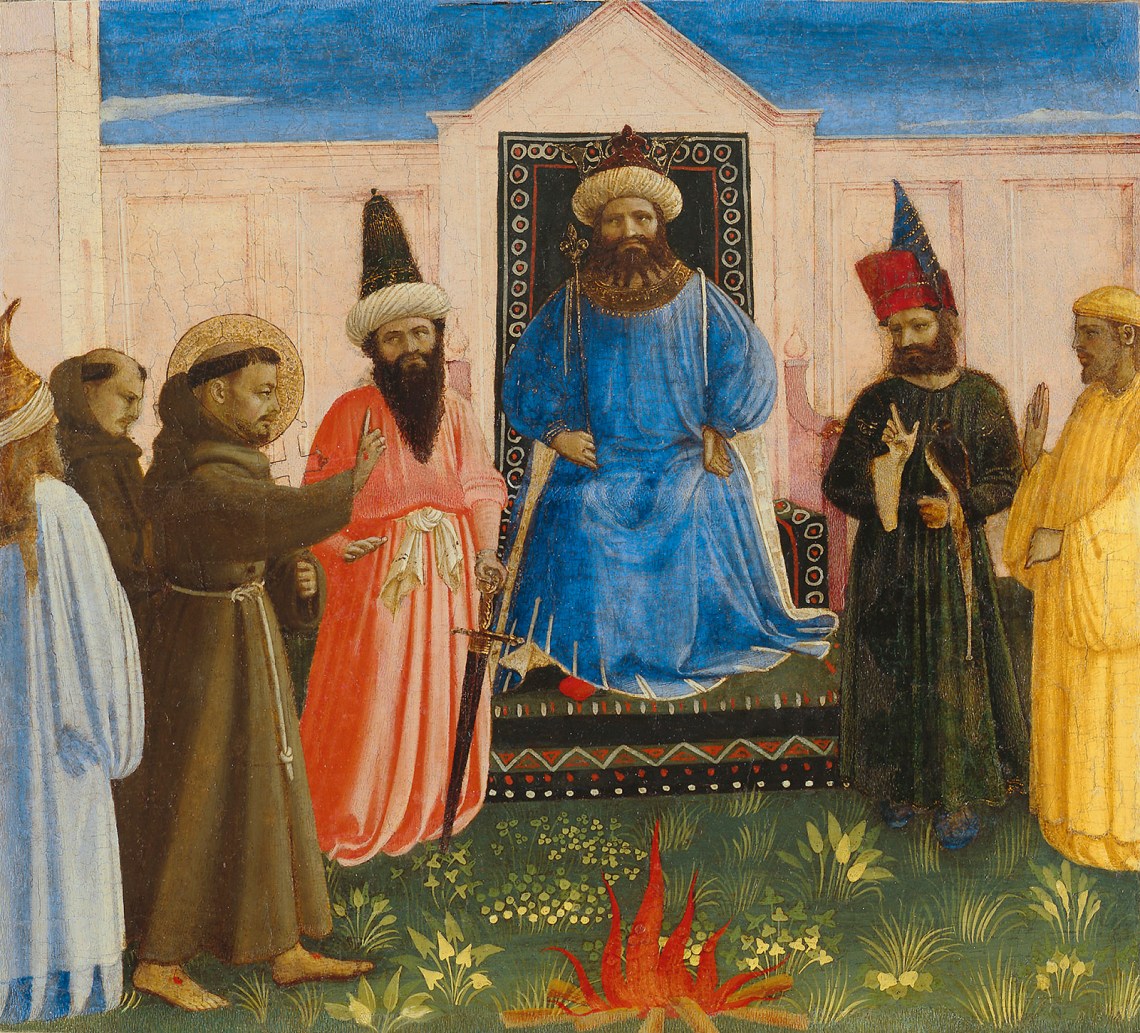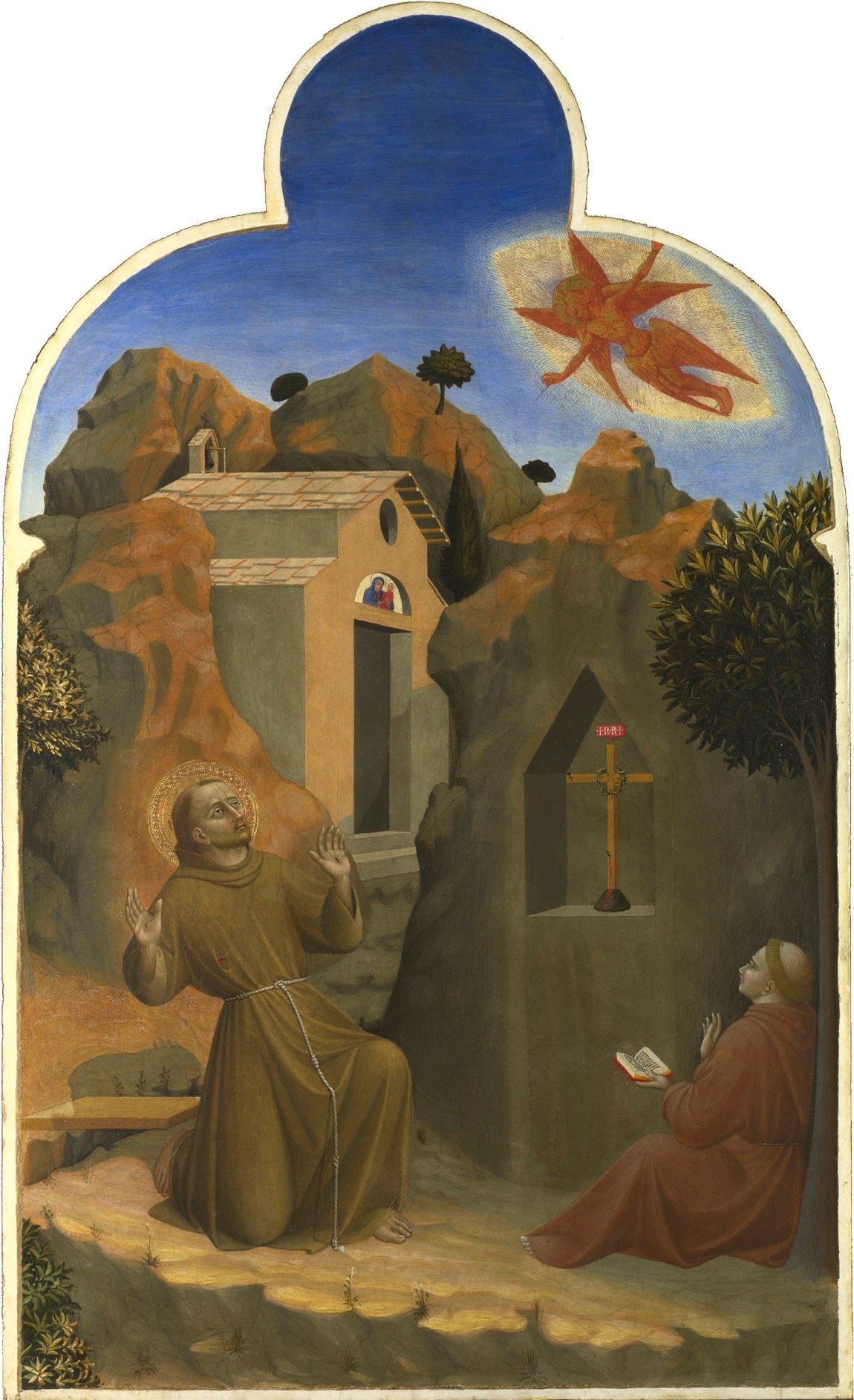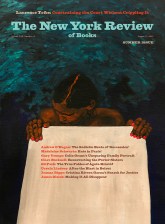“The poor always ye have with you; but me ye have not always.” Thus Jesus defended the woman who anointed him with costly oil of spikenard. The money she had spent should instead have helped the needy, a disciple was protesting. Yet honor paid to a unique and sacred body takes precedence over alms, Jesus seemed to argue. His praise of the woman’s ergon kalon, her beautiful act, helped legitimize the church budgets that afterward were set aside for effigies and bling. Here, then, is the rationale underpinning the items brought together for the exhibition “Saint Francis of Assisi” at the National Gallery in London.
Outstanding among these is a folded tunic of frayed sackcloth that, together with a hemp belt, is displayed under glass in a gilt rococo frame that writhes with asymmetric scrolls and tendrils. Gabriele Finaldi and Joost Joustra, the show’s curators, are coy about this alleged “Habit of St Francis”: they omit to state that a 2007 radiocarbon analysis found the cloth to have been woven at least eighty years after the saint’s death in 1226, while they disdain in any way to discuss the eighteenth-century fantasia that surrounds it.
In their show, however, intention takes precedence over factuality. Someone wished to venerate a saint who was agreed to be Jesus’ most faithful latter-day follower—often dubbed, in fact, a “second Christ”—and when it came to fabric believed to have touched the sacred flesh of this Francis, no frame could be too splendid. Around that reliquary stand works in diverse media—from a vellum chronicle to Francis-dedicated biopics and comics—that share its sincerity of purpose. In that sense, the show has a unity that is sobering and inspiring.
Even so, a tension is plain to see. Born at Assisi in the Umbrian hills some 1,180 years after Jesus, Francesco di Bernardone aimed to clear fresh ground for faith. To obey the first of his forebear’s commandments and love God, Francis’s followers should look to the essentials their creator had provided, discerning his goodness in the basic conditions of life on earth. To obey the second—to love thy neighbor—they should identify those who were most starkly in need, then go further and identify with them. Francis gave the lead to the many across the world who went on to join his order: he renounced all but indispensable possessions to become il poverello, the little poor man. This then is what must embarrass the curators: the exuberant gold curlicues seem in screeching discord with the bare brown sackcloth. If the objective of an artifact is to honor a devotee of poverty, we may feel that the stylistic means should be attuned to that ethos.
But how much would this aesthetic anxiety have troubled Francis and those who first gathered around him? There is no sure answer. The ground that Francis hoped to clear was littered. His mission began when Jesus spoke to him from a chapel’s crucifix, saying, “Go rebuild My house: as you see, it is all being destroyed.” Secularism was hardly the problem in 1205: rather, what snagged the eye, if you looked in the church’s direction, were centuries of annexes and ornaments that supposedly nodded toward God but cumulatively obscured plain sight of him. An overhaul was called for. It remained that for Francis, the church itself was a given, that the handiwork of rebuilding it was a duty, and moreover that images such as that crucifix had force. Francis—like Jesus with his parables—was a verbal artist, composing the Canticle of the Sun that praises God for every sure reality, from the “varied fruit with coloured flowers” to “Sister Bodily Death.” But he also was a visualizer, an impresario even—the original deviser of a Christmas crib when in 1223 he preached to crowds before a live ox and ass brought together around a manger.
Visualizations of Francis’s career were crowning features of the magnificent building project that began a few years later, following his death and fast-track canonization. The late-thirteenth-century frescoes inside Assisi’s Basilica di San Francesco, traditionally ascribed to Cimabue and Giotto, set new standards for pictorial drama: near-life-size figures eloquently gesturing within sharply particularized stage sets.
At a thousand miles’ distance, the London curators can only represent the saint’s early cult via a couple of thirteenth-century “vita-retables”—panels from Assisi and Pistoia on which a standing Francis is flanked by small scenes of miracles affirming his saintliness. The painters portray him long, lean, and frowning, yet they join in his praise of variety: the roses, blues, greens, and golds of their scenes are so many coloriti flori, and even the folds of the saint’s habits shimmer between chocolate and gorgeous violet. Celebration of Francis and celebration of eyesight unite most of all in a single later narrative scene, painted around 1429. Humans, in Fra Angelico’s entrancing vision, may be fallible and conflicted, yet their inherent dignity is communicated through the splendor and radiance of their robes.
Advertisement
As I stood looking at Angelico’s little panel, I noticed that the visitor by my elbow was moved to tears. She told me she had never previously entered the National Gallery, never known that a painting could offer such a flavor of joy. For me, that exchange was a momentary ejection from art history’s chambers into broader expanses of feeling. I reflected afterward that this entire exhibition is a doorway between artistic tradition and a surrounding terrain we might loosely call “spirituality.” The former draws on the latter: those early venerations of Francis pointed the way, whether through their dramatic force or their chromatic abundance, for so much art that National Gallery buyers would later seek out, and Finaldi—the museum’s director—has found a way to complete that circle. Medieval Italian panels that seem to heed the Canticle in their pious praise of the this-worldly have long been placed to the fore in his museum, an earnest preface to the Renaissance’s more fulsome canvases. From among those fifteenth-century acquisitions, Finaldi and Joustra have rehung Sassetta’s Scenes from the Life of Saint Francis all around the exhibition’s central atrium.
The Sienese artist’s set of altarpiece panels, completed in 1444, features episodes that have come to represent the saint. We see the downwardly mobile young Francis of 1206 casting aside capitalism and all his fine-stitched glad rags, to the fury of his merchant father. We see him four years later seeking higher parental authority as he begs the pope for license to found a new order. Come 1219, we switch from Assisi and Rome to Muslim Egypt, where Francis has set forth from a crusading army’s camp to address the sultan, challenging al-Malik al-Kamil to a test of true faith—the same remarkable encounter that Angelico depicted around a decade earlier. Francis is then seen reaching out not only across religions but across species, negotiating a nonaggression pact between a ravenous wolf and the citizens of Gubbio. The climax of the narrative comes in 1224, when Francis, withdrawn to a high wilderness, raises his eyes to a winged and shimmering Jesus, who darts rays that strike his follower with his own crucifixion’s wounds, the unique pain and privilege of the stigmata.
Sassetta intended loftiness—the architectures imagined in these panels are soaring and brightly hued—yet his poverello is emphatically diminutive. It is a young man unmanned, a frail, naked blond, who flees his macho father to seek the church’s protection, and an anxious little scamperer who pleads with the pope and tries to pacify both predator and commune. The painter, I feel, was himself an urbane upholder of fifteenth-century social stability, paying his respects to both opulence and humility. But from the Reformation onward, those values tug apart. The palette narrows as it occurs to artists that umbers should dominate depictions of an Umbrian pauper—no longer the colored flowers but the “Sister Mother Earth” below them, likewise saluted in the Canticle.
In the show’s sharp-edged poster image, Francisco de Zurbarán’s Saint Francis in Meditation (1635–1639), a brown-hooded Francis kneels crying to God in the darkness, his hands around a skull. Sister Death’s memento reappears in another big nocturne, Saint Francis Receiving the Stigmata, painted in 1620 for a Parisian chapel. Here Frans Pourbus delivered a pictorial scordatura, wrenching somber colors and jagged gestures into a disquieting alien harmony. Other Francis painters of the Counter-Reformation play to comparable tunings: Caravaggio with affecting restraint and tenderness, Murillo with a staggering, coercive command.
Francis looks up, in the Murillo image (painted 1668–1669), to Jesus, who leans down from the cross to embrace him, while we viewers look up to Francis. He is our model. We are his witnesses. In that subaltern status, Brother Leo, the companion who sat nearby while the saint received the stigmata, finds niches in other images as our proxy. Or must the roles fall out this way? Dare to identify, we later started to tell ourselves. In 1985 Antony Gormley made a body cast of himself standing to receive the stigmata, its lead lining holed at hands, feet, and chest. Richard Long walked for one week in 2022 through the wilderness where Francis had once prayed and came across “water from Eremo delle Carceri,” “white butterflies,” and “trees roaring in the wind.” I am sampling from fifty-six phrases that Long has printed onto a National Gallery wall to form the florets of a black-and-white dandelion. I find this subpoetic “I was here and you weren’t” postcard enervating and faintly condescending.
Advertisement
Yet we can all feel for Long’s wish to be the Francis who engaged with the natural world. While this theme’s great medieval images—those of Francis preaching to the birds—remain out of the curators’ reach, they offer a 2010 woodcut by Andrea Büttner that pays them a crisp, spare homage. And while its grandest Renaissance articulation—Giovanni Bellini’s Saint Francis in the Desert (1475–1480)—is denied them by the Frick, they present a late-nineteenth-century analog to that masterpiece. Giovanni Costa may have struggled harder than Bellini with his brushwork, yet Brother Francis and Brother Sun (1878–1885), his nearly two-meter-wide canvas of the saint hailing the dawn on a broad Umbrian hillside, is awe-inspiring in its earnestness. Nature is the name of the ray that transfixes us, uniting our hearts with the outdoors; Costa sings this common refrain of his times with a singular and poignant intonation.
Across the room from that painting stands the show’s weightiest work, Albero Porta—Cedro, a sculpture by Giuseppe Penone from 2012. It is a section, over three meters high, cut from the seasoned central bole, a third as wide, of a full-grown cedar. Branches have been lopped away and then Penone has probed with chisels so as to open a rectangular portal right through the trunk, almost large enough for an adult to conceive of entering. But within, the viewer is brought up against the younger tree—the shoot and twigs that originally reared up, from which successive rings of growth have been excised.
Penone’s starkness of means, his naked hard slog, delivers poetic wealth. We sense intuitively that our own bodies have to do with this tree. It stands even as we stand; it asks to become our ritual passageway; it then speaks to us about past and future, about the skeleton that underlies and outlasts us. In all this, there is the pain and violence of sawing and chiseling: Penone’s pantheism, if we should call it that, his invocation of all matter’s continuities, shares with Francis’s Christianity not only an embrace of natural fundamentals but an acceptance of tragedy. Much work, no money, end up wounded—such is life! This is an unfashionably edifying exhibition: coming away from it, I even started to think again about the poor.





